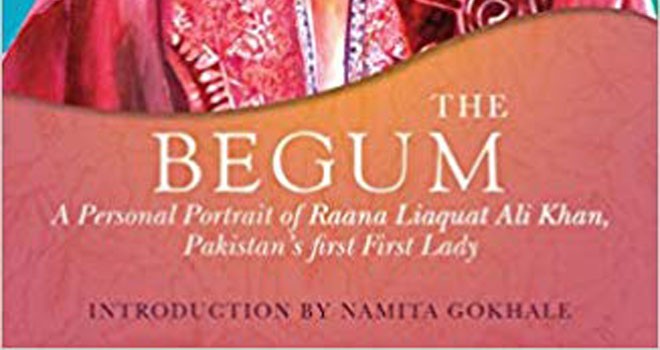
The book looks into the statecraft and politics of Begum Liaquat Ali Khan, besides the many fables that surrounded her

Compared to women of other communal groups, very few Muslim women took an active part in the movement for independence. It was in part due to the obsession with purdah and the general conservative tenor that kept women confined to the four walls of their house, seldom venturing into public life.
Education of Muslim women also faced a lot more religious censure than the other communities. Sir Syed Ahmed Khan, fearing the blowback never talked of women education, faced all kinds of criticism and was accused of fostering fahashi and beghairiti and of ‘imitating European values’ while abandoning his very own. Fatimah Jinnah was an exception for she did not belong to the UP/ Punjabi mainstream elite and her brother, too, was not a traditional person wanting to keep the conservative strain intact.
Begum Raana Liaquat Ali was a convert. She embraced Islam after her marriage to the second most important leader in the Muslim League, Nawabzada Liaqat Ali Khan. Her family, originally Brahmans, had converted to Christianity. After marrying Liaqat Ali Khan, she became a Muslim and changed her name from Irene Pant to Gul-e-Raana. She instantly found herself at the forefront of the political scene in the 1930s.
Rashid Jahan, Sheikh Abdullah’s daughter who went on to become one of the first highly educated women in the subcontinent, and Irene Pant went to the same college, Isabella Thoburn in Lucknow. Other prominent Muslim women who went to Isabella Thoburn College were Ismat Chugtai, Qurratul-Ain-Haider and Attia Hussain.
She was studying for her masters (economics) and had wanted to pursue a doctorate when she was married off to Liaquat Ali Khan in 1933. She was his second wife.
The Begum: A Portrait of Ra’ana Liaquat Ali Khan, Pakistan’s Pioneering First Lady is an adulatory book with plenty of praise for Begum Liaquat Ali Khan, who had to face the flak from the conservative sections as well as those who wanted to see a division between the migrated and the residents of the land after the partition. The rift became obvious immediately after independence and many believe that Liaquat Ali Khan was a victim of the emanticipated trend politics as it got bloodier by the day.
There were also indications of a distance between Liaquat Ali Khan and the Quaid-i-Azam. This could be because the founder of the nation had been ill and was frequently away from the scene of action. This was the time when the decision making authority within the government and the ruling party had started to create different power centres. There is only a passing reference to this growing rift between the two Quaids and that too where Fatima Jinnah is mentioned. One wonders whether more should have been written about it, given the shadow that it cast on the subsequent politics of the country. At the same time, it weighed in on the role that the Begum had to play in subsequent years in a diminished framework within which she had to operate.
Begum Liaquat Ali Khan was instrumental in forming the Pakistan Nurses’ Foundation, Pakistan Women’s National Guard, Pakistan Women Naval Reserve as well as the All Pakistan Women Association more familiarly known by its acronym APWA. She served as Pakistan’s ambassador in the Netherlands, Italy and Tunisia and at the International Labour Organization (ILO), and as Sindh governor.
There is also not enough meat in the book regarding the growing rift between the civilian government and the military regime of Ayub Khan. Only a hint of her dissatisfaction at the concept, the implementation of the idea of basic democracies and her support for Fatimah Jinnah in the election.
It is fairly obvious from the book that the world after independence turned out to be different from the one before that. Some of the leaders who had been very prominent were sidelined. One wonders why that happened. Was it because the deep state prevailed upon a political set up that was bogged down with problems which were unprecedented in nature as no other country had faced these immediately after independence?
It may have been better to place the life of the Begum against a bigger backdrop. The problems that she faced could then be understood in the context of the larger issues that saddled this nation. This would have resulted in a better understanding of her role in relation to the forces of history.